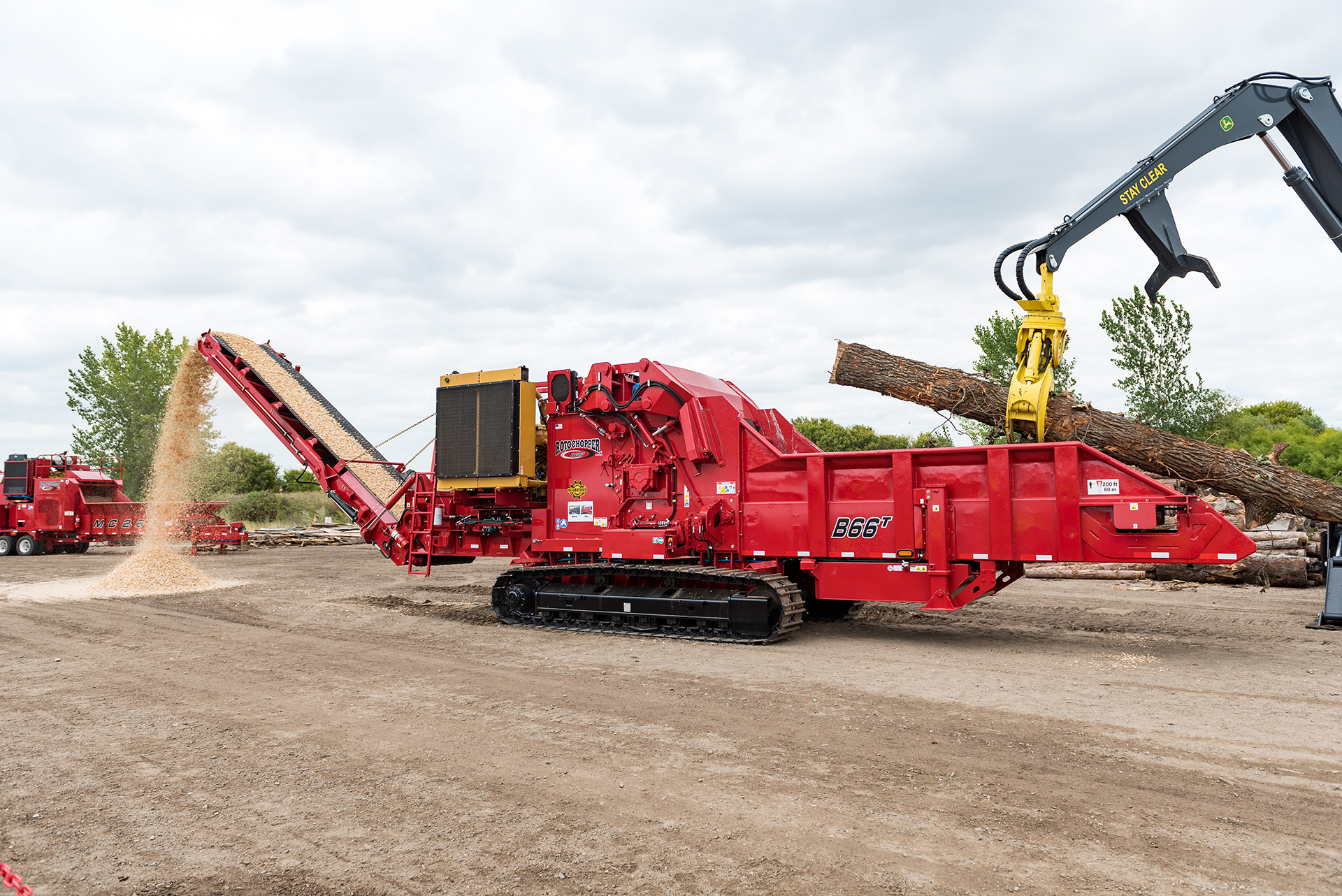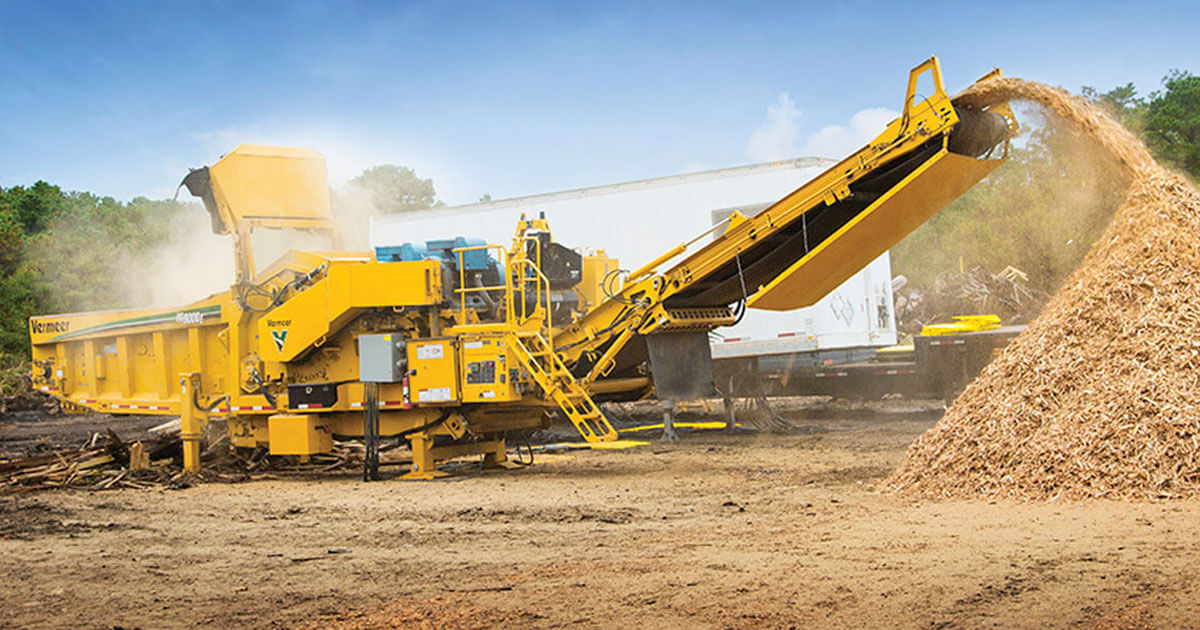Unleash Power and Precision: Horizontal Grinder for Wood Recycling
Unleash Power and Precision: Horizontal Grinder for Wood Recycling
Blog Article
Achieve Price Financial Savings and Greater Output With a Straight Grinder for Recycling
In today's fast-paced world, where efficiency and cost-effectiveness are paramount, organizations are constantly seeking cutting-edge options to improve their procedures. One such service that has obtained traction in the reusing industry is making use of straight mills. These powerful equipments have the prospective to attain substantial expense financial savings and raise output, making them a game-changer for reusing facilities. What specifically are the benefits of making use of a straight mill? What key attributes should you search for when picking one? And how can you make the most of price financial savings with this tools? In this discussion, we will certainly discover these questions and explore real-life study that highlight the excellent outcomes accomplished by taking on a horizontal grinder. Prepare yourself to find how this modern technology can reinvent your reusing processes and leave you hungry for even more.
Advantages of Making Use Of a Straight Mill
Using a horizontal grinder uses countless benefits in the realm of reusing and waste administration. Whether it is wood waste, construction particles, or also asphalt shingles, a horizontal mill can successfully grind these materials right into smaller sized, much more workable pieces.
An additional benefit of using a straight mill is its high manufacturing capacity. These machines are made to take care of large quantities of product, allowing for faster handling times and enhanced output. This is specifically beneficial for reusing facilities and waste monitoring business that require to process huge quantities of waste each day. By making best use of manufacturing capacity, a straight mill can enhance functional effectiveness and ultimately minimize costs.

Furthermore, straight grinders use the advantage of producing a regular end product. With flexible screens and blades, operators can conveniently control the size and top quality of the refined product. This uniformity is critical for industries that rely upon recycled materials, such as biomass power production or mulch production. By producing an uniform end item, horizontal mills make certain that the recycled materials satisfy the desired specs and can be efficiently used in numerous applications.
Trick Attributes of a Straight Grinder
A horizontal grinder is equipped with several key attributes that enhance its performance and efficiency in waste management and reusing procedures. The engine's high torque enables the mill to take care of challenging products such as stumps, logs, and building waste with simplicity.
Another vital feature of a horizontal mill is the huge feed opening. This enables the efficient and constant feeding of cumbersome materials into the mill. The vast opening minimizes the requirement for hand-operated labor in pre-processing the waste and arranging, saving time and increasing performance.
Furthermore, horizontal mills are created with flexible screens or grates. These displays figure out the size of the last product by regulating the bit size of the shredded product. The ability to readjust the display enables operators to generate different dimensions of completed items, catering to details recycling or waste monitoring demands.
Additionally, straight mills typically come geared up with a magnetic separator. This attribute assists in the elimination of ferrous products from the waste stream, making certain that the final item is free from impurities. The magnetic separator enhances both the top quality and bankability of the recycled products.
How to Pick the Right Horizontal Grinder
Choosing the proper horizontal grinder calls for careful consideration of numerous elements to make certain optimal performance and cost-effectiveness in waste administration and reusing operations. The first variable to consider is the dimension and sort of product to be processed. Different mills are made to handle certain products, such as timber, environment-friendly waste, or building particles. It is essential to select a mill that can successfully deal with the desired feedstock without causing extreme damage.
An Learn More additional variable to take into consideration is the desired output dimension (horizontal grinder). Mills feature different screen sizes that identify the final product dimension. It is essential to choose a mill that can produce the desired bit size for the intended application, whether it is for generating mulch, biomass gas, or pet bed linen
The source of power is also a vital factor to consider. Straight grinders can be powered by diesel engines, electrical motors, or crossbreed systems. The selection of source of power depends upon aspects such as accessibility of power, expense of gas, and ecological laws.
Furthermore, the capacity and throughput of the mill must be taken right into account. The dimension of the procedure and the anticipated volume of product to be processed will determine the needed capacity of the machine.
Last but not least, it is vital to consider the total longevity and dependability of the grinder. Try to find a trustworthy manufacturer with a record of creating high-quality tools that can endure the needs of the reusing industry.
Tips for Taking Full Advantage Of Cost Financial Savings With a Straight Mill
To maximize cost savings and functional efficiency with a straight mill, it is essential to carry out effective methods that take full advantage of performance and lessen costs. Below are some tips to assist you attain these goals:
Normal Maintenance: Conduct routine examinations and maintenance on your grinder to ensure it is operating at peak efficiency. This will certainly help avoid failures and costly repair work, as well as prolong the life-span of your equipment.
Effective Product Handling: Effectively feeding the mill with the ideal quantity of product is essential for accomplishing expense financial savings. Overloading the grinder can result in enhanced fuel usage and damage on the machine. On the various other hand, underloading can lead to lowered productivity.
Optimum Grinding Strategies: Trying out various grinding methods to discover the most efficient method for your details products. Changing the mill's settings, such as rotor rate and display size, can help achieve the desired fragment dimension while decreasing power usage.
Proper Disposal of Residual Material: Dispose of the residual product from the grinding process in a economical and eco pleasant fashion. Take into consideration recycling or repurposing the by-products to reduce waste and possibly produce additional earnings.
Instance Research Studies: Real-Life Instances of Expense Financial Savings and Greater Output With a Straight Grinder
Several companies have effectively achieved substantial cost financial savings and boosted output by making use of a horizontal mill for their recycling procedures. One such case study includes a waste management business that used a horizontal mill to procedure wood waste. By applying this technology, they had the ability to reduce transportation prices by grinding the waste on-site, getting rid of the demand for multiple journeys to a distant garbage dump. Furthermore, the horizontal grinder raised their output by permitting them to process larger quantities of wood waste in a shorter quantity of time.
One more study includes a construction company that utilized a straight grinder to reuse concrete and asphalt waste from their demolition tasks - horizontal grinder. By grinding the waste material into reusable aggregate, they were able to minimize disposal prices and acquisition less virgin products for their future tasks. This not just caused significant price financial savings but additionally minimized their environmental impact
Moreover, a reusing center that focused on processing organic waste used a horizontal grinder to grind and compost backyard waste. This allowed them to enhance their processing capacity and produce higher-quality compost in you can check here a shorter amount of time. Consequently, they were able to meet the growing demand for their compost products while attaining substantial price financial savings.
These real-life instances demonstrate the efficiency and benefits of using a horizontal mill for reusing operations. The expense savings and increased output gotten by redirected here these firms highlight the capacity of this innovation in enhancing efficiency and sustainability in numerous markets.
Verdict
In conclusion, using a straight grinder for recycling deals various advantages such as cost savings and better output. Real-life situation researches showcase the efficiency of straight grinders in accomplishing substantial cost financial savings and increased outcome.

Report this page